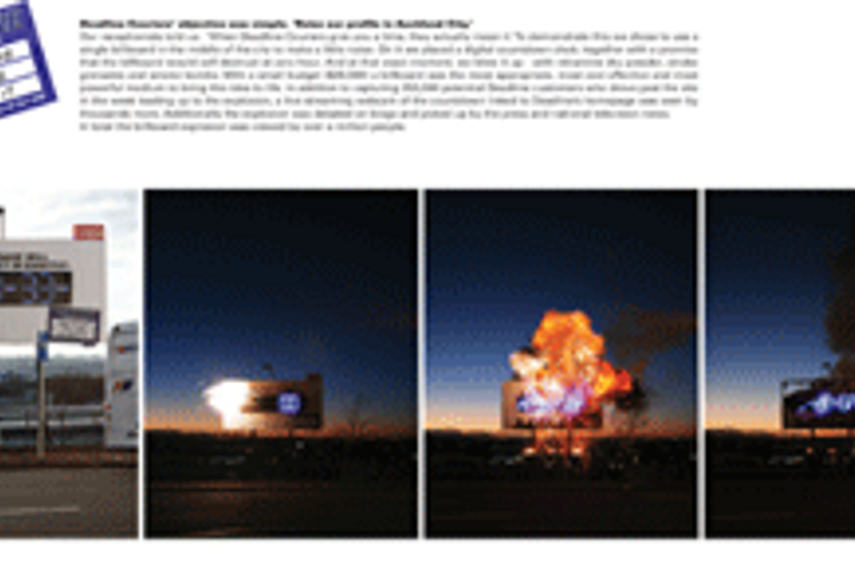
India’s niggardly tally of four bronzes at the Media Spikes 2008 was disappointing compared to the number of Spikes picked up by countries like Malaysia, Thailand and Japan. Campaign India’s Bindu Nair Maitra travelled to Bali to bring you a first-hand report on the three days of networking, seminars and awards that went by and the absence of Indian creative heads (and suits) at the event.
At Media Spikes 2008 which was held between April 16th to 18th in Bali,Indonesia, one expecting to see Indian faces would have been sorely disappointed. We counted three Indian faces, namely McCann Erickson’s Prasoon Joshi, Future Brands’ Santosh Desai and Grey Worldwide’s Priti Nair among the delegates.
In a session titled “Real work for Real India”, moderated by Christopher Graves, president and CEO, Asia Pacific, Ogilvy Public Relations Worldwide, featuring Prasoon Joshi, executive chairman, McCann Worldgroup and regional executive creative director, Asia Pacific and Santosh Desai, MD and CEO, Future Brands, the discussion veered around the need to understand the complex dynamics of the Indian market which posed a challenge for multinational brands. The session included a screening of Indian ads, as selected by Joshi, which included films for Lifebuoy soap, Fevicol, Surf Excel and Chlormint among others. These were successful campaigns but the question of them being accepted at a global forum was the point that was being debated. Desai was of the view that India was unique as a market, in terms of its diverse complexity. He felt that the idea that the global creative idea should be able to travel and therefore work within the conext of the Indian market was irrelevant and was caused due to a vested interest in ideas staying at a central location in the west, given that the headquarters of most global brands is based there. As he pointed out, the same question was never asked of any other industry and the Indian domestic market was large enough, with lower production costs.
Commenting on his choice of ads that afternoon, Joshi admitted that the ads were chosen to represent the Indian consumer psyche and demonstrate the uniqueness of the Indian market. All the ads, Joshi pointed out, were able to connect at an emotional level with Indian consumers but may not be understood at a global level. He was of the view that even though good Indian advertising may not sometimes make as much of an impact globally, great advertising ideas always managed to appeal at a very human level even with global audiences. He pointed to the example of the Happydent commercial which won numerous accolades at an international level, in spite of being Indian to the core.
In the session titled ‘Agency of the future’, moderated again by Ogilvy’s Chris Graves, featuring Keith Smith, president- International, TBWA Worldwide, digital agency glue’s CEO Mark Cridge and Dominic Proctor, chief executive, MindShare Worldwide, the speakers were each asked to imagine the agency of the future and how they would visualize the communications industry a few years from now. In view of the recent MindShare global restructuring that has taken place, Proctor was of the view that the new model that MindShare has visualized with all verticals within its organization working towards one P&L was the natural way forward. When reminded that such a structure would result in a lot of misgivings internally as one badly performing unit would negate all the good work done by the units within the same organization that were working well, Proctor was firm in the belief that such a system was the best way forward. Speaking about the way ahead for MindShare, Proctor said that the agency’s future blueprint lay in investing heavily in technology, to scale up. TBWA’s Smith and glue’s Cridge were of the view that the new agency structure as mentioned by Proctor would lead to a power struggle between creative, media and other constituents of the business that would not be practical to implement. The Media Spikes 2008 award show held on the last day was a mixed bag of sorts for the Indian advertising industry. While there were a number of shortlisted entries especially in the print category, there were four bronze Spikes in all for India.
Among the winning Indian entries were Leo Burnett Mumbai’s campaign for Luxor Highlighters, ‘Che’, ‘Charlie’ and ‘Hitler’ which won a bronze in the print category, O&M Mumbai’s campaign for Asian Paints, ‘Cinderella’ which won a bronze in the dimensional mailing category, Leo Burnett Mumbai’s campaign for Reliance Communications, ‘Highway’ which won a bronze in the radio category, McCann Erickson Mumbai’s campaign for Anando Milk, ‘Building’ which won a bronze in the Outdoor category for best use of ambient advertising: special build. Young Spikes 2008, which is an initiative to promote upcoming talent in the Asia Pacific region, also had an Indian connection with McCann Erickson Mumbai’s team coming in as the second runner up for the Bali Tap Water project.
On the sparse Indian presence at the show, McCann’s Joshi commented, “I would have loved to see more work from India. I think India has sent very limited work to Spikes this year and I am disappointed. It’s just one those years. Last year, was a great year for India with Happydent winning five Spikes and I am hoping next year will be better.”
Given the perception that Indian advertising is not understood at creative shows like the Cannes Lions, it is disappointing to see Indian agencies not using Asia specific fora such as Spikes to announce their work. Smaller nations in the Asia Pacific region have managed to carve their own unique sense of creative identity, so it feels like an opportunity wasted when the Indian advertising industry fails to take interest in doing the same. To compete on a global stage, Indian agencies need to announce their work to the world and only increased participation at international award shows will spur the industry to do so.


.jpg&h=268&w=401&q=100&v=20250320&c=1)



.jpg&h=268&w=401&q=100&v=20250320&c=1)
.jpg&h=268&w=401&q=100&v=20250320&c=1)

.jpg&h=268&w=401&q=100&v=20250320&c=1)
